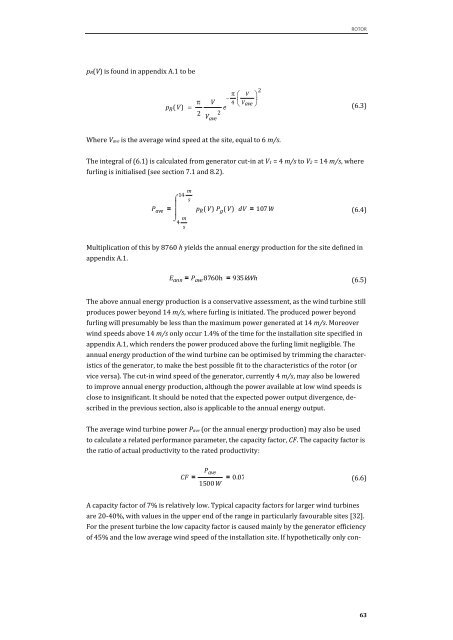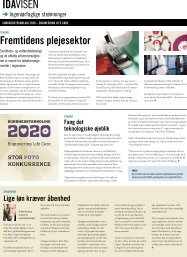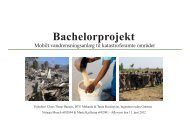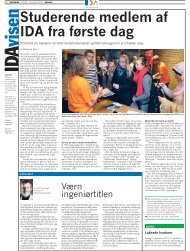Create successful ePaper yourself
Turn your PDF publications into a flip-book with our unique Google optimized e-Paper software.
pR(V) is found in appendix A.1 to be<br />
Where Vave is the average wind speed at the site, equal to 6 m/s.<br />
ROTOR<br />
The integral of (6.1) is calculated from generator cut-in at V1 = 4 m/s to V2 = 14 m/s, where<br />
furling is initialised (see section 7.1 and 8.2).<br />
Multiplication of this by 8760 h yields the annual energy production for the site defined in<br />
appendix A.1.<br />
P ave<br />
pR( V)<br />
(6.3)<br />
(6.4)<br />
(6.5)<br />
The above annual energy production is a conservative assessment, as the wind turbine still<br />
produces power beyond 14 m/s, where furling is initiated. The produced power beyond<br />
furling will presumably be less than the maximum power generated at 14 m/s. Moreover<br />
wind speeds above 14 m/s only occur 1.4% of the time for the installation site specified in<br />
appendix A.1, which renders the power produced above the furling limit negligible. The<br />
annual energy production of the wind turbine can be optimised by trimming the character-<br />
istics of the generator, to make the best possible fit to the characteristics of the rotor (or<br />
vice versa). The cut-in wind speed of the generator, currently 4 m/s, may also be lowered<br />
to improve annual energy production, although the power available at low wind speeds is<br />
close to insignificant. It should be noted that the expected power output divergence, de-<br />
scribed in the previous section, also is applicable to the annual energy output.<br />
The average wind turbine power Pave (or the annual energy production) may also be used<br />
to calculate a related performance parameter, the capacity factor, CF. The capacity factor is<br />
the ratio of actual productivity to the rated productivity:<br />
�<br />
�<br />
2<br />
V<br />
2<br />
Vave e<br />
2<br />
� V<br />
� � �<br />
� �<br />
4 � Vave �<br />
4 m<br />
14<br />
s<br />
m<br />
� s<br />
�<br />
=<br />
�<br />
pR( V)<br />
Pg( V)<br />
dV<br />
= 107W<br />
�<br />
E ann<br />
= Pave8760h = 935kWh<br />
Pave CF = =<br />
0.07<br />
1500W<br />
A capacity factor of 7% is relatively low. Typical capacity factors for larger wind turbines<br />
are 20-40%, with values in the upper end of the range in particularly favourable sites [32].<br />
(6.6)<br />
For the present turbine the low capacity factor is caused mainly by the generator efficiency<br />
of 45% and the low average wind speed of the installation site. If hypothetically only con-<br />
63










